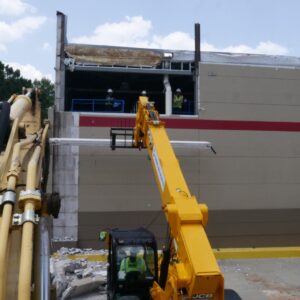LPR parking solutions are becoming increasingly popular, offering several benefits for customers and the management of parking facilities. These systems can vastly improve parking access and security, creating an improved parking experience for tenants while also reducing total costs for operators.
For example, in a gated parking facility, a fixed in-lane license plate recognition camera automatically opens the gate when a driver passes by, while in a non-gated parking lot, enforcement officers quickly verify permits or reservations using a handheld or in-vehicle LPR-based enforcement technology.
No Tickets to Keep Track Of
LPR parking solutions eliminate the need for tickets to keep track of – your customers simply scan their license plates. This saves time, money, and headaches for your management team – all while offering your customers the best in parking convenience.
Enforcing rules so that only paid and authorized vehicles can park in your facility has never been easier. LPR systems log every vehicle that enters your parking lot and notify managers if they violate a rule.
This technology is gaining a lot of attention in the parking industry. It’s also beginning to be used more by public safety as an effective tool for enforcing warrants, amber alerts and other vehicles of interest.
No Tickets to Swap
Unlike traditional ticketed systems, lpr parking solutions eliminate the need for tickets to swap. They use license plate recognition to track users and grant pre-paid access to the car park.
This is highly efficient and avoids issues such as lost tickets, tailgating, or ticket switching. In addition, it is easy to manage black lists and control events at entry and exit.
This is because all vehicles are tracked by their license plates, making it impossible to exchange tickets or fraudulently report on the amount of time they’ve spent in your facility. This enables operators to maintain their revenue without sacrificing safety or convenience.
100% Contactless
In lpr parking solutions, vehicle entry and exit is automatically tracked by license plate recognition (LPR) and payment is done with a contactless smart-phone app. This means no ticket machine, receipt printer or any other hardware is required.
As a result, no revenue can be lost to ticket swapping and customers cannot dishonestly report how much time they spend in your parking facility.
NPCI has launched the first-of-its-kind, fully contactless parking facility with FASTag at Hyderabad Airport and plans to replicate the system in other metros. It has initiated discussions with major malls, airports, railway stations, metro stations, hospitals and private parking lots to offer the facility.
No Need for Physical Passes
LPR parking solutions eliminate the need for physical passes such as tickets, fobs, and passes by allowing authorized users to enter and exit based on their license plate. This enables a seamless, touchless experience that reduces traffic buildup and eliminates the need for lines to form at parking entry points.
In gated parking environments, a customer’s license plate is read when they approach the entrance, which opens the gate for them to park without requiring interaction with a kiosk. Upon exiting, the system calculates their parking fee based on the time they parked and allows them to pay for it via their smartphone.
With LPR, parking enforcement becomes a more effective process as patrol officers no longer have to randomly inspect lots for unauthorized vehicles. Instead, they can use a near-real-time database to identify overburdened parking lots and violation hotspots.
Less Pollution
LPR technology reduces pollution by reducing the number of vehicles parked in parking lots. The system uses a camera to detect license plates, which then triggers an alert when vehicles enter or exit the parking lot.
The software also offers extensive reporting details that enable operators to optimize their parking facilities. These include occupancy data, violations hotspots, time-of-day pressures, and quiet zones.
LPR also improves safety in parking lots by ensuring that only authorized vehicles can enter the facility. This helps keep customers and drivers safe while still providing an optimal user experience.





